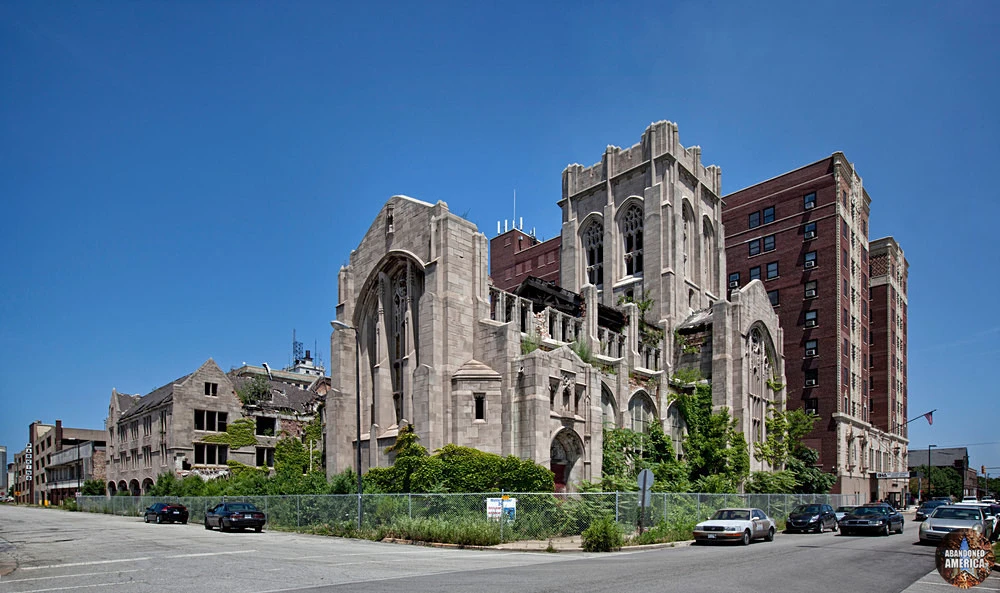The City Methodist Church, also known as City United Methodist Church, is a disused church in Gary, Indiana. Once the largest Methodist church in the Midwest, it ceased to function as a place of worship in 1975 after just over 50 years of service.

History
A Methodist church had been established in Gary since the city’s founding in 1906. In 1916, Dr. William Grant Seaman became its pastor. Seaman envisioned a much larger church to serve the town and aimed to bring a prominent religious presence into a neighborhood then known for its brothels and drinking establishments. He secured the backing of US Steel, the city’s main employer, which donated the site and nearly half of the construction cost. The building process started in 1925, taking 21 months and costing $800,000. The first service was held on October 3, 1926. The organ was donated by Elbert Gary, the city’s namesake. The church, built by Lowe and Bollenbacher of Chicago, featured a nine-story complex including Seaman Hall, a theater seating 1,000 people, corporate offices, a gymnasium, a Sunday School, and a dining hall. Although there were plans for a bowling alley and a rooftop garden, these were never completed. By 1927, the church had a congregation of 1,700 and a staff of six.

However, by 1929, Seaman had become unpopular with his parishioners due to his interest in cultural diversity, leading to his involuntary transfer to Ohio. His successor was even less popular. Seaman died in 1944, and his ashes were interred in the church according to his wishes.

During the Great Depression, the church leased part of Seaman Hall to Gary College for additional funds. Post-World War II, Indiana University Centre and later Indiana University Northwest used part of Seaman Hall. The church reached its peak in the 1950s with over 3,000 members.

Decline and Closure
As Gary declined in the 1960s and 70s, so did the church. Predominantly a white middle-class institution, it lost many members to white flight. Rising crime rates and high maintenance costs due to the building’s size and harsh lakefront climate exacerbated the situation. By 1973, the congregation had dwindled to 320 members, about a third of whom regularly attended. Attempts to sell the building failed, and the church closed in 1975.

After Closure
Indiana University acquired the structure and used part of Seaman Hall as a satellite campus, but the church itself was neglected. By the 1990s, the building was decaying and was further damaged by a fire in 1997.

Today, the church is a popular destination for urban explorers (permits are now required) and has hosted events like Goth weddings. Despite its deteriorated state, it remains standing and has been listed on Indiana Landmarks’ 10 Most Endangered Places in Indiana. Most of the interior fixtures have been stolen. In 2011, part of the sanctuary roof collapsed. In 2014, city authorities revived plans to turn the site into a large park, with the sanctuary as the centerpiece and the rest of the complex demolished.

As a Location
The church has been used as a filming location for movies such as Soul Survivors, A Nightmare on Elm Street, Transformers: Dark of the Moon, and parts of Pearl Harbor and Sense8. It was also featured in the series Life After People during its exploration of Gary in Season 1, Episode 2.


